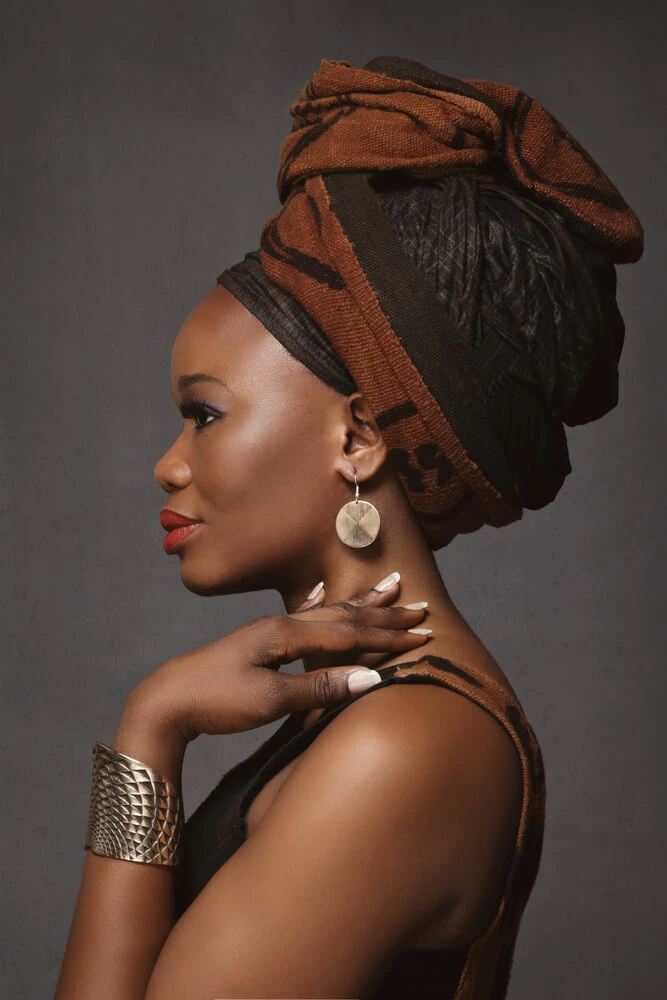What are Step-Up Rings and what are they used for?

- What step-up rings are in photography
- Definition and Sizes
- Stacking the Rings Pros and Cons
- Cons of stacking the rings
- Step-down rings for filters
- Step-down rings issue explained
- Buy a step-up adapter for the largest filter
- Common Uses of Step-Up Rings
- Lens Protection
- Wide-Angle Conversion Lenses
- Macro Photography
- Conclusion
Filters have a general use among photographers in terms of color correction and exposure compensation . They allow you to have an additional layer to your exposure triangle settings and control the exposure more conveniently instead of constantly compensating for it with your shutter speed, aperture, and ISO settings following the lighting conditions you are shooting at. For instance, there are two types of ND filters, fixed - with a certain polarization setting and variable with a range of that setting.
If you know the reduction that you are going to need for your camera then you will generally get better quality and usually pay a lot less if you just get a fixed ND filter compared to variable ones. And usually, that means that you have stack filters to have a stop-range variety. Hence, that is very inconvenient to screw on and off these filters and that is a major difference between variable and fixed ND filters. But both of these types have one general issue, if you have replaced your lens, all these filters do not match it and can’t be mounted. And this is where step-up rings come in handy.
What step-up rings are in photography
The main issue with lens filters is that they have a set diameter that corresponds to specific camera lenses. So in a nutshell, each different lens ring thread requires matching for a specific ND filter. But what to do if you have already bought a set of ND filters and they do not match your new lens?
Step up and down ring is an accessory for ND filters that allows you to adapt your old ND filters on a new lens and vice versa. These rings are usually made of plastic or alluminium and come in different sizes.
Definition and Sizes

If you are looking to buy some filter step-up rings you are probably looking at to get a filter to colorize a photo or a polarizer to go onto your lens.
The 1st step that you want to do is pull out all of your lenses. Now as you have them in front, you want to look at the thread size. For example, we have a Canon wide lens of 67mm and a Canon 58mm lens both have threads of different sizes. So if you are looking to buy a filter, do you need to get one for the 58 and another one for the 67 mm lens? The short answer is no. What you want to do is go and buy the filter for your largest lens. As you have your 67 mm ND filter matching your 67 mm lens, now you need a step-up ring for your secondary lens which is 58 mm thread to go up from a 58 mm lens to a 67 mm filter.
Stacking the Rings Pros and Cons

Imagine that we have our 58 mm lens of 58mm thread size, if we want to step up to a 67 mm thread size we need a step ring for that to let the ND filter go on it. The main feature of step-up rings is that you can stack them on top of each other. So, if you have your 58 to 62 step-up ring mounted on your lens you can now add a 62-67 mm ring on top of the previous ring which means if you can’t find a specific 58-67 mm ring you can use that conversion method instead. But if you are lucky and find a single step-up ring that extends the mount all the way from 58 to 67 in a single step, then there is going to be less clutter in your equipment and also with a single piece of equipment. However, it is also important to note here that the 1st thread will only match a specific lens, so that is why having multiple rings allows you to assemble and disassemble them to match different lenses and specific ND filter sizes.
Cons of stacking the rings
It can be frustrating dealing with multiple screw-on rings stacked together. When you need to remove some, you often have to unscrew them all, which can be tricky to handle. Switching filters between lenses with different thread sizes adds to the hassle—constantly screwing and unscrewing eats up a lot of time on a shoot.

Buying an 82mm ND filter for smaller lens threads might seem odd. However, consider a scenario with, say, a 35mm lens where having an 82mm filter offers versatility. This larger filter can fit on multiple lenses with step-up rings, saving time by avoiding constant filter changes.
Step-down rings for filters

Step-down rings work the same but in the opposite way. If you have bought a larger lens let’s say 82 mm and you want your old 58 or 67 mm ND filters to work on it, you got to buy a step-down ring for that range. However, there is a significant disadvantage of step-down rings compared to step-up rings.
Step-down rings issue explained
Using a step-down ring, we basically shrink the size which means we also come to an issue of vignetting as our larger lens is now reduced by the step-down ring thread size. So let’s say we have an 82 mm lens but ND filters from our old lens of 58 mm. In order to put these together, we need to have a step-down ring going from 82 to 58 mm and that reduces our lens by ~30% via vignetting. The physical hole in front of the lens just simply covered by the adaptation.
And if we add here an issue of using multiple rings screwed together, that way you have to put all the rings together first in order to get the right size and that adds a lot more weight to the front of your lens and also increases the likelihood of your shot getting vignettes is also not helping you when you are shooting on a gimble. That is why a specific step-up ring bought for your 58-82 or 58-67 mm adaptation is better and allows you to go in just 1 step which makes your front less heavy and avoids vignetting.
Buy a step-up adapter for the largest filter
To recap the said, the best thing to do is to buy a filter matching your largest lens that will cover you on every lens below and then you can buy a step-up ring to match the size of whatever lens that you are adapting it to. Step-down ring causes vignetting and stacking multiple rings makes that even worse.
Common Uses of Step-Up Rings

Besides the obvious function of filter rings to use filters of different sizes it severs many other co-purposes as well.
Lens Protection
Larger filters set on a ring, both act as a protective barrier for the front element of smaller lenses, shielding them from scratches, dust, and accidental impacts without compromising image quality.

Wide-Angle Conversion Lenses
Wide-angle conversion lenses are accessories used to expand the field of view of a camera lens, allowing for a wider perspective. Step-up rings can be practical in this context.
In terms of compatibility, some wide-angle conversion lenses have larger diameters than the lens they're intended for. Step-up rings enable the attachment of these larger conversion lenses to smaller-diameter lenses, ensuring compatibility and expanding the options for wide-angle shooting.
From a vignetting standpoint – when using wide-angle conversion lenses on smaller-diameter lenses directly, a darkening or distortion at the edges of the image can occur. Attaching the conversion lens with an appropriate step-up ring that matches the larger size helps avoid vignetting issues and ensures a clear, undistorted image.
Additionally, if the wide-angle conversion lens is larger than the lens it's being mounted on, the step-up ring acts as a protective barrier, safeguarding the smaller lens from potential damage.
Macro Photography

There are also applications for step-up rings in macro photography:
- Macro lenses often have unique thread sizes. Step-up rings enable the use of standard-sized filters, such as polarizers or close-up filters, on these specialized macro lenses, expanding the creative options without the need for duplicate filters.
- Besides, some other macro photography accessories, like ring flashes or LED lights, may come with larger filter diameters. Step-up rings allow these accessories to be mounted onto lenses with smaller filter threads, enhancing lighting options for macro shots.
- Step-up rings provide a cost-effective solution by enabling the use of existing filters and accessories across multiple lenses, saving photographers from investing in duplicates for each lens size.
Conclusion
The main advantage of using step-up rings is to save on purchasing new filters for your new lens. In addition, it serves a protection function as breaking the lens is more expensive than replacing the ring or a filter with it. Step-up rings provide versatile use for filters of all types no matter the photography type you are interested in shooting.
Co-founder of RetouchMe. In addition to business, he is passionate about travel photography and videography. His photos can be viewed on Instagram (over 1 million followers), and his films can be found on his YouTube channel.
Moreover, his profile is featured on the most popular and authoritative resource in the film industry — IMDb. He has received 51 international awards and 18 nominations at film festivals worldwide.

with RetouchMe














